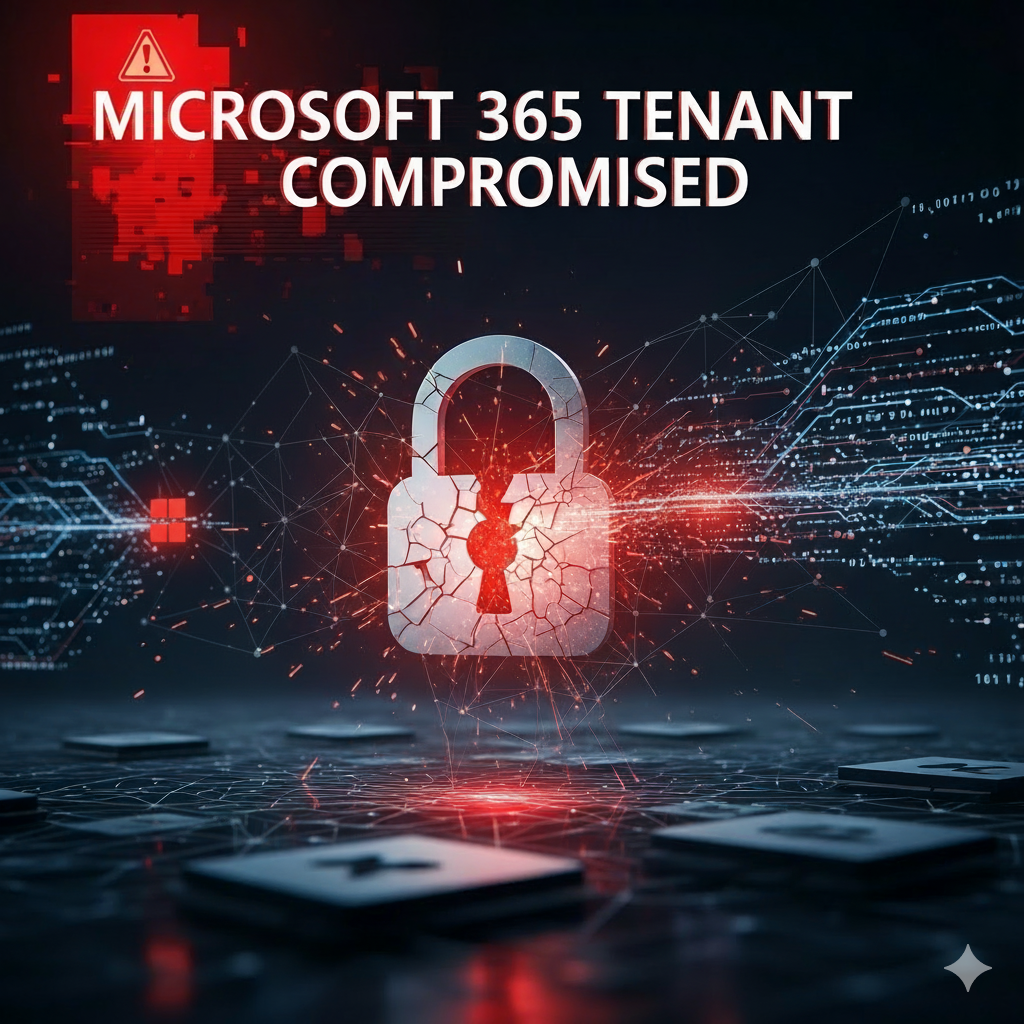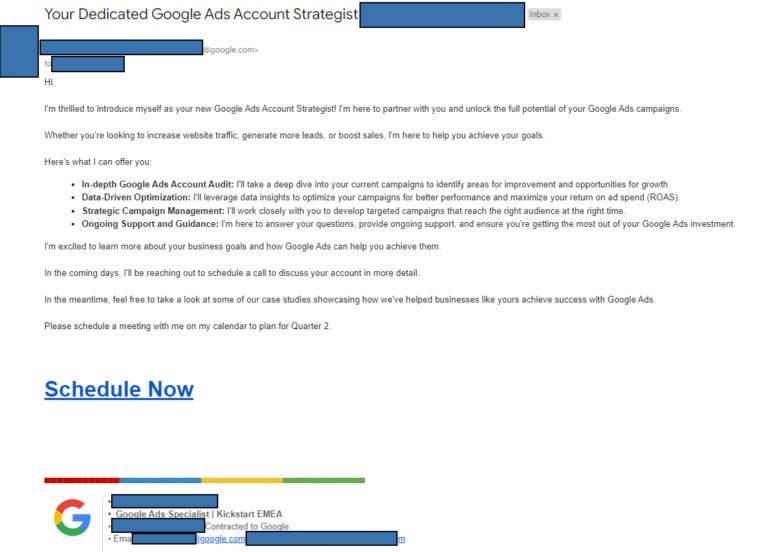The Dangers of a Microsoft 365 Breach
A compromised Microsoft 365 account is more than a simple security incident. Once an attacker gains initial access, they can establish persistent backdoors, allowing for silent, long-term access to your company’s most sensitive data and digital infrastructure. Understanding how these breaches occur is the first step toward building a robust defense.
If the compromised account has global administrator access, it is critical to perform a thorough set of checks to ensure the account is fully recovered and secured. Refer to the comprehensive checklist below for detailed steps.
Common Microsoft 365 Attack Vectors
Attackers typically exploit three primary vulnerabilities to gain access to corporate M365 environments.
1. Compromised Credentials & Insufficient Authentication
The most common entry point remains the use of weak, reused, or previously breached passwords. When an account is not protected by the critical security layer of Multi-Factor Authentication (MFA), a compromised password is all an attacker needs. This single point of failure can grant them immediate access to email, files, and internal communications.
2. Phishing and Social Engineering
Attackers use sophisticated phishing emails designed to look like legitimate communications from colleagues, partners, or even Microsoft itself. These emails often contain links to documents or files that redirect to a counterfeit Microsoft 365 login page. Unsuspecting users enter their username, password, and MFA code, delivering their credentials directly to the attacker.
Once inside, attackers may operate stealthily for months or deploy Remote Access Trojans (RATs), granting them complete control over the victim’s computer, including its camera and microphone.
3. Session Hijacking via Cookie Theft
Browser cookies, which keep you logged into services like Microsoft 365, are a high-value target. Through malware, malicious browser extensions, or social engineering, attackers can steal these session cookies. This tactic, known as session hijacking, allows them to bypass both password and MFA requirements entirely, giving them authenticated access to your account until the session cookie expires, which can be days or weeks later.
The Aftermath of a Successful Breach
The consequences of a breach are severe and multifaceted, ranging from covert surveillance to complete system lockout.
- Silent Espionage: Attackers can monitor communications, exfiltrate sensitive data, and analyze your operations for months without being detected, waiting for the opportune moment to strike.
- Account Lockout and Data Destruction: In a more aggressive attack, hackers may immediately change your passwords, locking you out of your own environment. This gives them unrestricted time to steal or permanently delete critical data from SharePoint, OneDrive, and email accounts.
- Launchpad for Wider Attacks: A compromised M365 account is often used as a beachhead for further attacks. Attackers can impersonate the legitimate user to defraud clients and colleagues, reset passwords for other critical online services linked to the email address, and irrevocably damage your company’s reputation.
Microsoft 365 Tenant Compromise: Persistence Checklist
If attackers have gained Global Administrator access in your Microsoft 365 tenant, they may have established backdoors that survive standard remediation steps like password changes. This checklist provides a systematic framework for reviewing and eliminating common and advanced persistence mechanisms.
Section 1: Identity and Access Management
This section focuses on user accounts, roles, and the policies that govern their access.
- 1. Global Admins & Privileged Roles:
- Audit all accounts holding Global Administrator and other high-privilege roles (e.g., Privileged Role Administrator, Exchange Admin, SharePoint Admin).
- Remove any unfamiliar or non-essential accounts from these roles immediately.
- 2. Newly Created User Accounts:
- Scrutinise all recently created user accounts.
- Verify their legitimacy and ensure they have not been assigned privileged roles.
- 3. Guest & External Accounts:
- Review all guest user accounts in Azure AD.
- Remove any unknown or unnecessary guests, as they can be used for persistent access.
- 4. Multi-Factor Authentication (MFA) Configuration:
- Confirm that MFA is enforced via Conditional Access for all users, especially administrators.
- Inspect policies for any exclusions that could serve as a bypass (e.g., trusted IP ranges, specific user exemptions).
- 5. Conditional Access Policies:
- Audit all Conditional Access policies for suspicious changes, weak configurations, or exclusions that could allow an attacker to bypass security controls.
Section 2: Applications and Service Principals
Attackers frequently abuse application permissions to create powerful, hard-to-detect backdoors. *Important*
- 6. OAuth & Enterprise Applications:
- Audit all Enterprise Applications in Azure AD, paying close attention to recently added apps or those with high-level permissions.
- Make sure you remove the filter so that you see all of the applications (sort by date). Check all API key access.
- Investigate and revoke illicit or unnecessary API permissions and OAuth consents granted by users.
- 7. App Role Assignments:
- Review which applications have been granted powerful directory roles (e.g.,
Directory.ReadWrite.All,Exchange.ManageAsApp). - Remove excessive permissions that are not essential for the application’s function.
- Review which applications have been granted powerful directory roles (e.g.,
- 8. Service Principals & App Secrets:
- Inspect service principals for recently added or long-lived credentials (secrets or certificates).
- Revoke any suspicious credentials and rotate legitimate ones as a precaution.
Section 3: Mail Flow and Collaboration
Control over mail flow and data sharing is a primary target for data exfiltration.
- 9. Mailbox Forwarding & Inbox Rules:
- Programmatically check all mailboxes for inbox rules that forward or redirect mail to external addresses. Remove any malicious rules.
- 10. Mailbox Permissions:
- Audit delegated mailbox permissions (
Send As,Full Access,Send on Behalf) and remove any permissions granted to attacker-controlled accounts.
- Audit delegated mailbox permissions (
- 11. Transport (Mail Flow) Rules:
- Review tenant-wide transport rules in the Exchange Admin Centre for any rules that BCC or forward messages to external domains.
- 12. Remote Domains:
- Check your organization’s remote domain settings to ensure that automatic forwarding is disabled globally unless explicitly required.
- 13. SharePoint & OneDrive Access:
- Audit tenant-wide external sharing settings.
- Review site permissions and remove suspicious guest accounts or external users with excessive access.
Section 4: Tenant and Directory Configuration
Low-level configuration changes can compromise the entire tenant’s security posture.
- 14. Federation & Custom Domains (Critical):
- Inspect your tenant’s federation settings. Ensure no unauthorized Identity Providers (IdPs) have been added and that the token-signing certificate is secure.
- Verify the list of custom domains and remove any that were added by the attacker.
- 15. Security Defaults & Legacy Authentication:
- Confirm that Security Defaults or equivalent Conditional Access baseline policies are active.
- Ensure legacy authentication protocols (POP, IMAP, SMTP) are disabled, as they do not support modern authentication methods like MFA.
- 16. Directory Extensions & Custom Attributes:
- Advanced attackers may modify the directory schema. Check for suspicious custom attributes or schema extensions that could be used to hide information.
Section 5: Automation Platforms
Automation tools can be weaponized to exfiltrate data or execute commands.
- 17. Power Automate & Logic Apps:
- Review all automation flows for data exfiltration routines, such as those that save attachments to an external location or forward emails based on keywords.
- 18. Azure Automation & Runbooks:
- Inspect for unauthorized automation accounts, runbooks, or schedules.
- Review and rotate any credentials associated with automation accounts.
Section 6: Auditing and Device Management
Reviewing logs and device state is essential for a complete investigation.
- 19. Unified Audit Log:
- Ensure the Unified Audit Log is enabled and review it for suspicious activities, such as
Set-Mailbox,Add-MailboxPermission, andConsent to Application.
- Ensure the Unified Audit Log is enabled and review it for suspicious activities, such as
- 20. Azure AD Sign-In Logs:
- Analyse sign-in logs for anomalous activity, including sign-ins from suspicious IP addresses, impossible travel scenarios, or unusual user agents.
- 21. Intune / Device Enrollment:
- Review enrolled devices in Intune for any that were added by the attacker. Audit device compliance and enrollment policies for malicious modifications.
- 22. Defender Alerts & Security Tools:
- Thoroughly review all alerts in Microsoft 365 Defender, Defender for Cloud Apps, and Sentinel that occurred during and after the suspected compromise period.
✅ Final Recommendation: Document your findings at each step. If you discover multiple, deeply embedded persistence mechanisms, the integrity of the tenant may be compromised. In such cases, consider engaging a specialist incident response team like Microsoft’s DART or planning for a full tenant migration after putting it in lock down.
Enhance your Security:
- Ensure all accounts have MFA/2FA or ideally use Passkeys. That means no lazy IT admins who think they don’t need it.
- All passwords are unique to 365 not used by any other website and at least 12 characters.
- Critically don’t give Global Administrator rights to users, business owners or anyone that logs in daily. Use a standby account or admin only account for this purpose.
- Add “Defender for Office: Plan 1” or Plan 2 to add just an extra layer of protection for all users.
- Make sure all computers have decent anti-malware like “ThreatDown” not low value products like McAfee or Norton etc..
- Add Network DNS protection like “NextDNS” with all the protection facilities turned on.
- Install a IDS/IPS firewall like Ubiquiti Gateway to allow a better and easier overview of network traffic.
- Train staff once every 3 months and do testing as they tend to forget very quickly!







